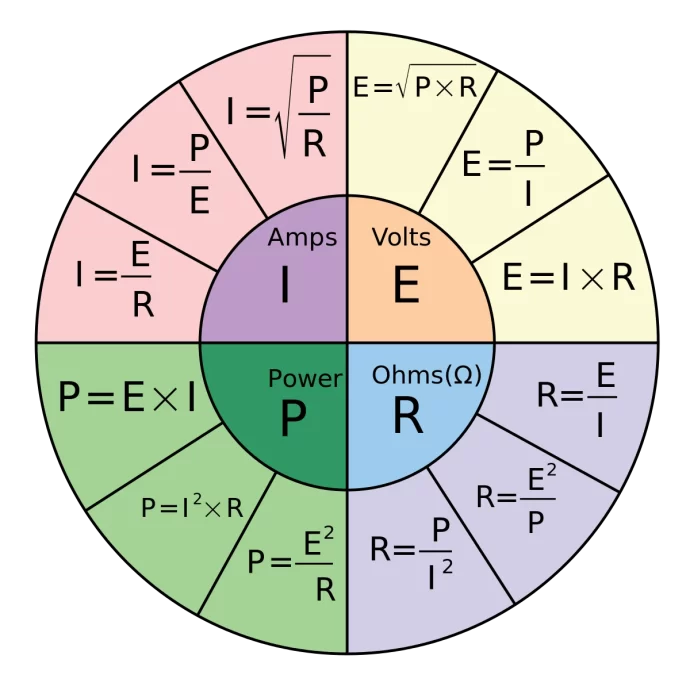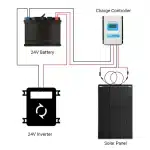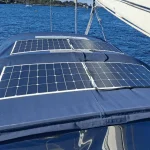When thinking about solar panels, you might hear terms like volt, watt, and amps (Amps Vs Volts Vs Watts)tossed around. If you’re new to these concepts, it can be confusing! But don’t worry, we’re going to explore these terms together in a fun and simple way. By the end, you’ll understand what they mean and how they can help you choose the right solar panels for your home. So, let’s jump into the world of electricity!
What Are Volts, Watts, and Amps?
1. Volts (V)
Imagine electricity as water flowing through a pipe. The pressure that pushes the water through the pipe is like the voltage in an electrical circuit. Volts measure this “pressure” or “force” that drives the electric current through wires.
Practical Example: Think of a garden hose. If you turn the water faucet on just a little, the water trickles out. But if you turn it all the way on, the water gushes out with much more force. In this analogy, the water pressure from the faucet is like voltage. Higher voltage means more force to push the electric current.
2. Amps (A)
Now, let’s talk about the flow itself. Amps measure the amount of electric current flowing through the wires, just like how we measure the volume of water flowing through the hose. The relation between Amps and Volts follows ohm’s law.
Practical Example: If you have a thick hose and turn on the water, more water can flow through compared to a thin hose. In electrical terms, amps measure how much electric current (like the amount of water) is flowing. A higher number of amps means more electric current is moving through the wires.
3. Watts (W)
Watts bring it all together. They measure the total power of the electricity. You can think of watts as how much work the electricity can do. It’s like how many gallons of water can be delivered per minute with the given pressure and flow.
Practical Example: Imagine you’re using the water from the hose to fill up a pool. If you have high pressure (volts) and a big hose (high amps), you can fill the pool faster. Similarly, in an electrical circuit, higher watts mean more power, which can do more work, like running a larger machine or lighting a brighter bulb.
In electrical terms, watts are calculated by multiplying volts and amps together:
Watts=Volts×Amps
Why Are These Concepts Important?
Understanding Volts
Voltage is crucial because it determines how much force is pushing the electricity through the circuit. It’s like the engine in a car – without it, nothing moves. In the world of solar panels, voltage helps to determine how much energy can be transferred from the panels to the battery or to your home.
Example: If you have a solar panel system with a higher voltage, it can potentially send more energy into your home or battery system. This is like having a stronger pump to push water through your garden hose.
Understanding Amps
Amps tell us how much current is flowing. This is important because if the current is too high for the wires in your home, it can cause overheating and damage.
Example: If your solar panels generate more amps than your wiring system can handle, it’s like trying to push too much water through a narrow pipe – it can burst. So, knowing the amps helps ensure your system can safely carry the electricity.
Understanding Watts
Watts are the most practical measure of power because they combine both the voltage and the current. They tell us the overall capacity of your solar panel system to generate electricity.
Example: If you know the wattage of your solar panels, you know how much energy they can produce. For instance, a 300-watt solar panel produces 300 watts of power under ideal conditions. It’s like knowing how fast you can fill your pool with your garden hose.

Choosing the Right Solar Panels
Now that we understand what volts, amps, and watts are, let’s talk about how to use this knowledge to choose the right solar panels.
1. Calculate Your Energy Needs (in Watts)
The first step is to determine how much power you need. Look at your electric bills to see how many kilowatt-hours (kWh) you use each month. To find out how many watts you need, you can use the formula:
Watts = Energy Consumption × 1000 ÷ Hours of Sunlight
Example: If you use 900 kWh a month and you get about 5 hours of sunlight per day, you would need:
900 × 1000 ÷ (30 × 5) = 6000 watts
So, you need solar panels that can generate around 6000 watts in a day.
2. Check the Voltage Rating
Solar panels come with different voltage ratings. You’ll need to match the voltage of your solar panels to the voltage of your battery or electrical system.
Example: If you have a 24-volt battery system, you should choose solar panels that have a voltage close to 24 volts to ensure compatibility and efficiency.
3. Consider the Amps
Make sure your wiring and other components can handle the current (amps) your solar panels will produce. Solar panels are rated by their current output as well.
Example: If your solar panel system generates 30 amps, make sure the wires and inverters you use can handle this amount of current to prevent overheating and ensure safe operation.
4. Match the Wattage to Your Needs
Finally, look at the wattage of the solar panels. Higher wattage panels can produce more power and may take up less space on your roof compared to lower wattage panels.
Example: If you need 6000 watts of power, you could choose 20 panels rated at 300 watts each or 15 panels rated at 400 watts each. The latter option would take up less space.
Practical Tips for Choosing Solar Panels
Assess Your Roof Space: Check how much space you have available for solar panels. Higher wattage panels can save space if your roof area is limited.
Check Compatibility: Make sure the voltage and current ratings of the panels match your existing system, including batteries and inverters.
Think About Future Needs: Consider if you might need more power in the future. Choosing panels with higher wattage can give you more flexibility.
Consult a Professional: It’s always a good idea to talk to a solar energy expert. They can help you understand your specific needs and ensure your system is safe and efficient.
Conclusion
Understanding volts, amps, and watts is like knowing how much pressure, flow, and power your garden hose has. When choosing solar panels, these concepts help you determine the right system for your energy needs. By considering your energy usage, the space available, and the compatibility of your system, you can make an informed decision and enjoy the benefits of solar power.
So, next time you hear about volts, amps, or watts, you’ll know exactly what they mean and how they help power your home with the sun’s energy!







